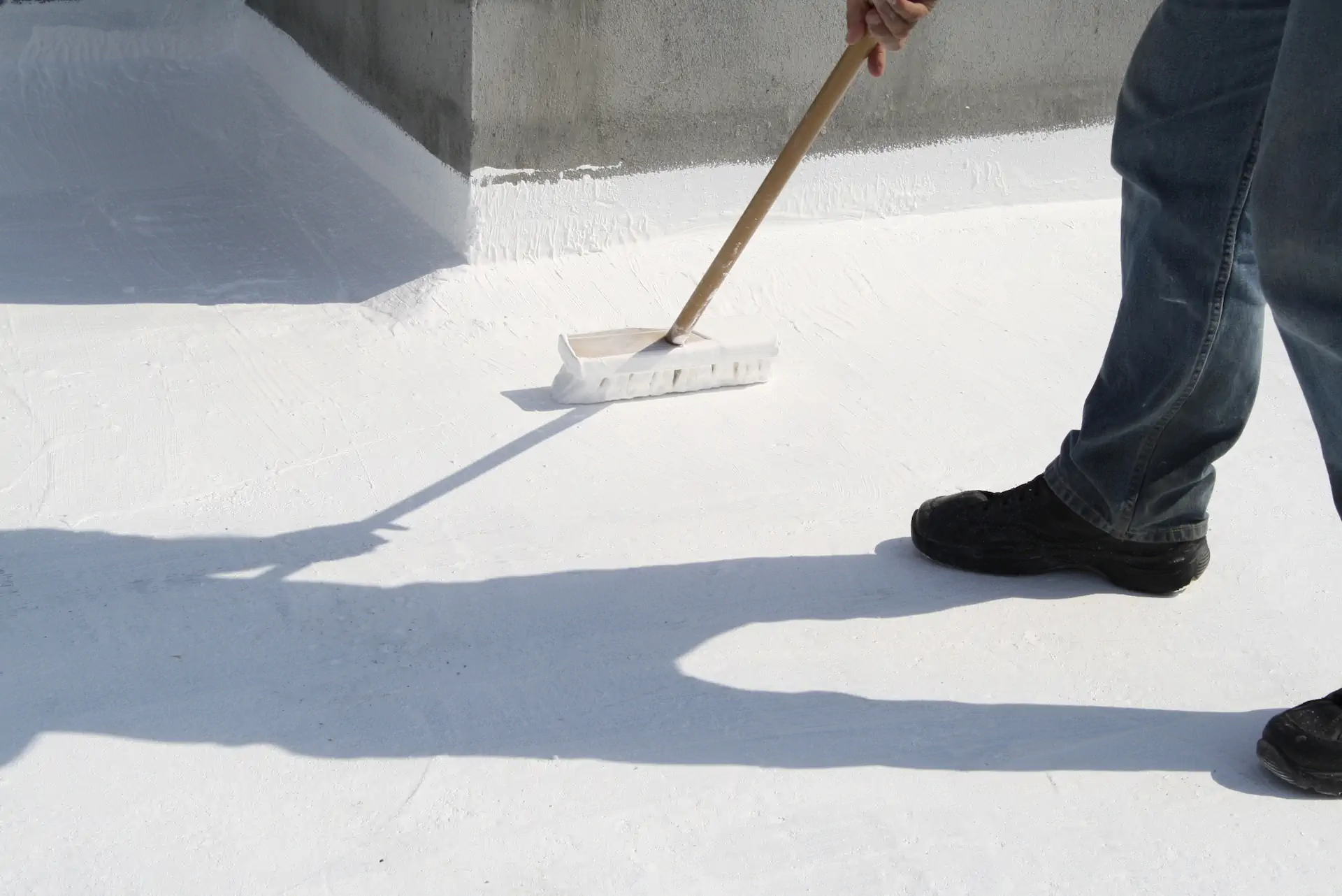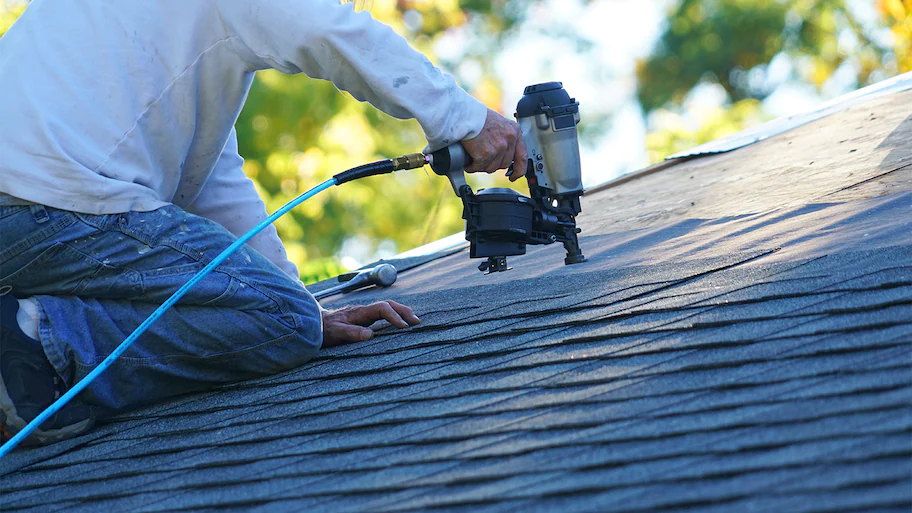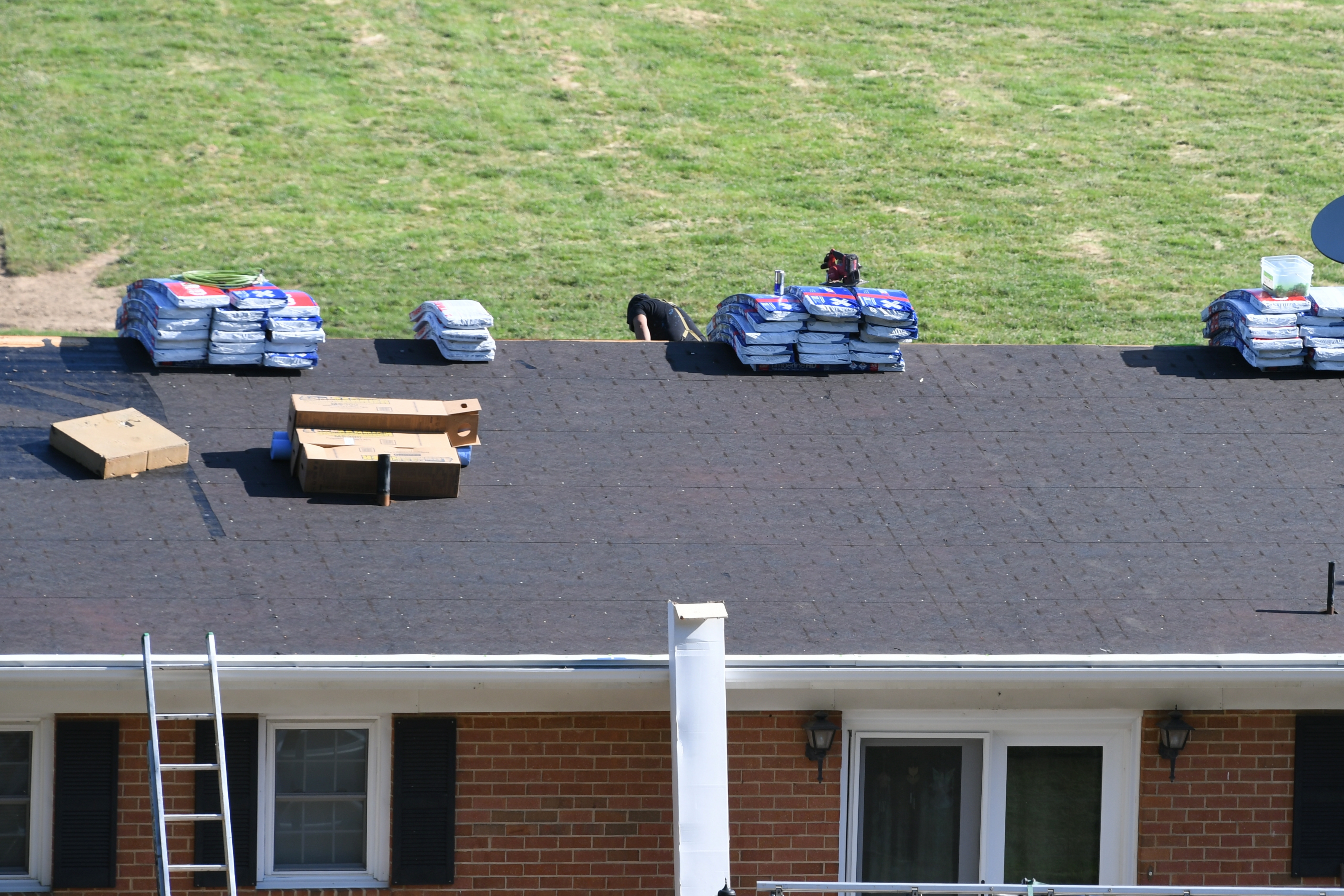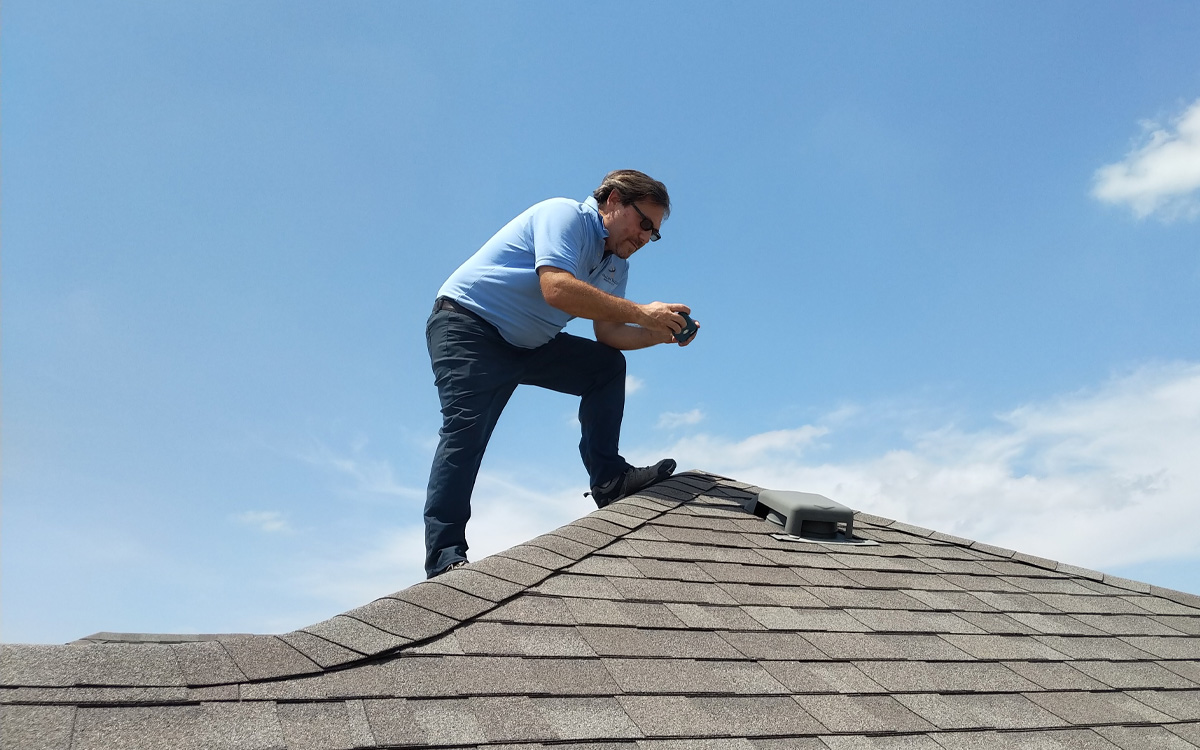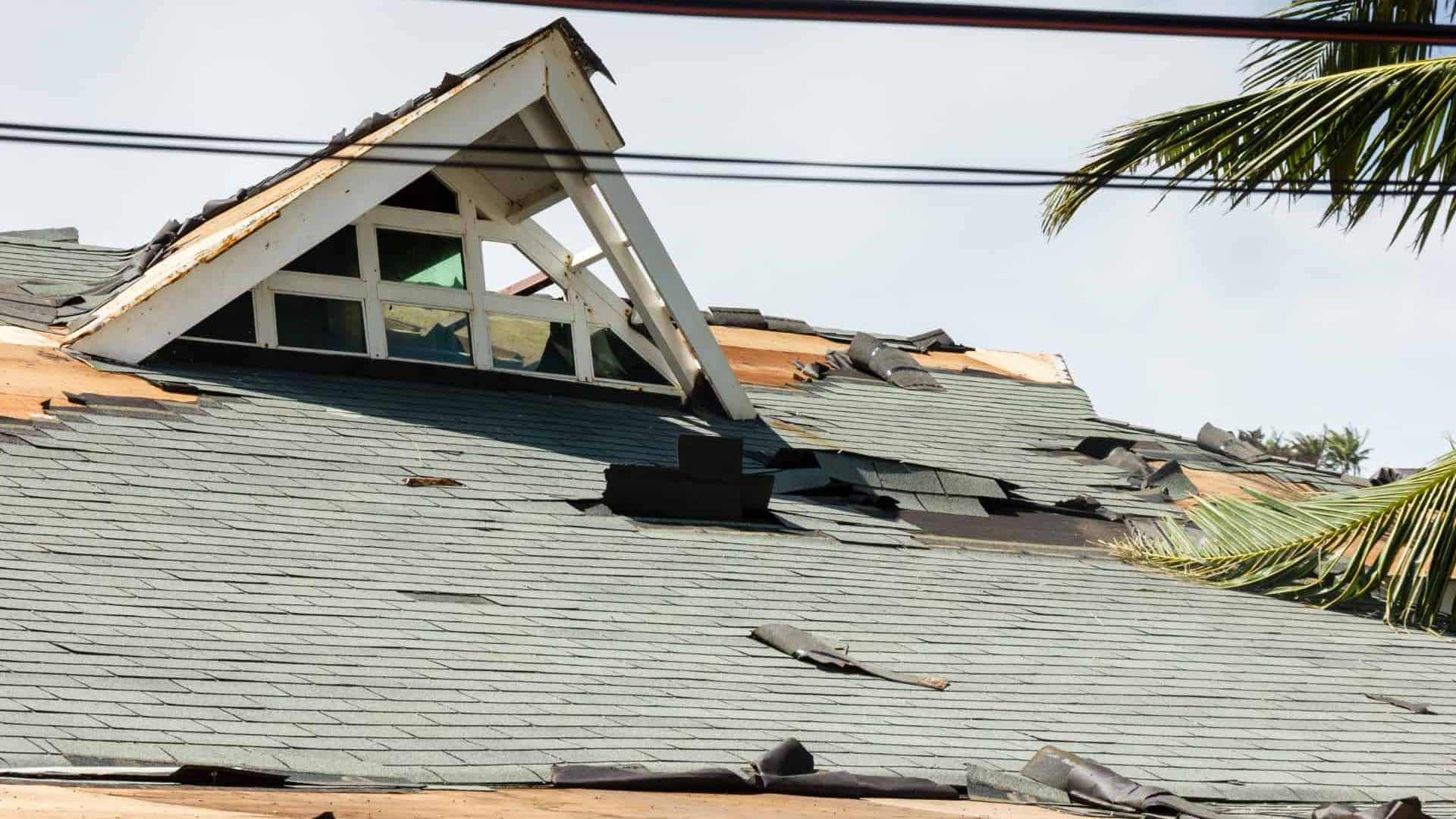What purpose do gutters serve?
The key purpose of a gutter system is to provide a channel for redirecting water away from your home. By redirecting the water, the gutter prevents erosion of the ground around your home and significantly decreases the risk of foundation issues.
But when your gutters begin to sag, it means something is wrong and the gutter system is no longer moving water away from your home and your foundation properly.
What are the reasons your gutters may start to sag and how can you fix it?
There are several reasons why gutters sag. In this article, we are going to look at a few of the more common reasons we find day in and day out when our customers reach out for help.
Reason #1: Clogged Gutters
It’s surprising to customers how quickly gutters can fill with debris even if there are not trees very close to the house, and especially for those under heavy tree coverage. When gutters get full of debris it slows down the flow of water through the gutters to the point where water is not able to drain out of the downspouts.
When flow of water is restricted from exiting the gutters, the gutter is then holding a tremendous amount of weight from being filled to capacity. Water is heavy, 8.34 pounds per gallon. And one foot of 5″ K-style gutter found on a typical home can hold about 1.2 gallons of water (6″ K-style gutters hold about 2 gallons of water per foot).
If you can imagine a typical 20 foot run of gutters filled to capacity would be holding around 200 lbs. Or in other words, imagine a 200 lb person hanging on to the gutters. Now you can see how all that weight would cause the gutters to sag and pull away from the house. Throughout the year gutters typically collect leaves, limbs, roof granules, and even kids toys (believe it or not), and all these contribute to a lack of flow through the gutters.
Heavy downpours and snow and ice are some of the times of year that can cause the most damage if the gutters are clogged, where the gutters would be filled to maximum capacity. It’s a good idea to get your gutters cleaned at least 3 times a year, and sometimes more often if the gutters and roof have a lot of debris falling on it.
We recommend late fall (mid to late November), early winter (mid January), and mid spring (mid to late April). Gutter protection can help a lot to keep the gutters from getting clogged.
Remember gutter protection will not keep leaves and debris from falling on your roof, but they are designed so that the actual gutters themselves do not get clogged and so that water will flow freely through them. Debris can sometimes collect on top of the gutters and the wind may blow it off, or it may need a little human invention to help clean the tops of the gutters off. Still this a much better situation than having the gutters completely full and clogged of debris.
Reason #2: Gutter Pitch
One common problem that we find with gutters is that the gutters are not pitched correctly. It’s true that water is self-leveling, but sometimes we find that gutters are not sloped in a manner that will create positive draining for the water to get to the downspouts.
This problem will cause the gutters to hold extra water, or in some cases, always hold water, since all the water in the gutter would never get to the downspouts to drain. This extra weight in the gutters causes them to pull away from the house and sag.
Reason #3: Hanger Spacing
The hangers are what hold the gutters on to the perimeter edge of the house. Older gutters were literally attached with large spikes that look like a big nail, secured from the front of the gutter. Newer type hangers are installed from the inside of the gutter and are commonly referred to as hidden hangers since they are not able to be seen from the ground.
Even in dryer climates where there is not a lot of rainfall, the recommended spacing should be no greater than every 36″. However in climates that receive a lot of rain hangers can be installed as close as every 18″. A good rule of thumb here in the southeast is about every 24-30″. If there are not sufficient gutter hangers installed with the gutters, the weight of the water running through the gutters, will cause the gutters to sag and pull away from the house.
Reason #4: Wood Rot
Often when gutters start to sag or pull away from the house, water runs off the roof behind the gutters and saturates the wood or fascia material behind the gutters and expedites the deterioration of this material.
Some houses may require additional flashing that runs under the shingles and into the gutter to prevent the water from running behind the gutters. This is sometimes referred to as drip edge or eave metal, or just flashing.
Some houses, depending on the year they were constructed, may have a larger construction gap or spacing at the edge of the roof that may require additional flashing to get water to run directly into the gutter.
Reason #5: Undersized Gutters
Most homes installed in the southeast are a traditional 5″. This is probably fine for a house that is not too large or a roof pitch that is not very steep. However, if the house is larger with a lot of roof area and a steep pitch, this could create a scenario where the gutter is overwhelmed during a downpour and not able to drain fast enough.
The extra weight in the gutter causes the gutter to sag and pull away from the house over time. A gutter professional will be able to help determine if a larger gutter or different type of gutter might be right for the home. For example, half-round gutters carry much less water than a 5″ gutter, while a 6″ gutter can carry almost twice the capacity of water than a 5″ gutter. There are several things to consider when choosing the gutter style and size that is right for your home.
Reason #6: Gutter Sections
Older homes may have metal gutters that were installed in 20-foot runs and soldered or seamed together with joints. If these types of gutters were not initially pitched correctly, it is very difficult to make adjustments, and over time the weight of the water may cause these sections to sag or pull away from the house.
Modern-day gutter machines allow metal and aluminum gutters to be run at the job site in continuous lengths so that there are fewer joints in the gutters, and the gutters are easier to pitch correctly in smaller increments.
Reason #7: Damaged Gutter
Sometimes the gutters are just worn out and old. Older metal gutters may be rusted out. Older aluminum gutters that have sagged of pulled away from the house can get permanently twisted, and regardless of the adjustments, just never look right or perform correctly.
Tree limbs or branches may have fallen and hit the gutters and caused them to pull away from the house. Ladders may have been laid directly on the gutters without a roof standoff and bent or dented them permanently (We always recommend the use of a ladder standoff to keep from denting and damaging the gutters).
These gutters may have a permanent sag or bend in them, and there may be no other option than to replace the gutters, or at least a section of the gutters to resolve the problems.
Don’t Let Your Sagging Gutters Ruin Your Home
This list is certainly not exhaustive of every possible reason for sagging gutter, but maybe a helpful guide if you see some of these common types of problems occurring with your gutters. If you see any of these issues in your rain gutters, please call a gutter professional that can help you troubleshoot your problems and find a solution to help your gutters perform correctly and do the job they were designed to do.
